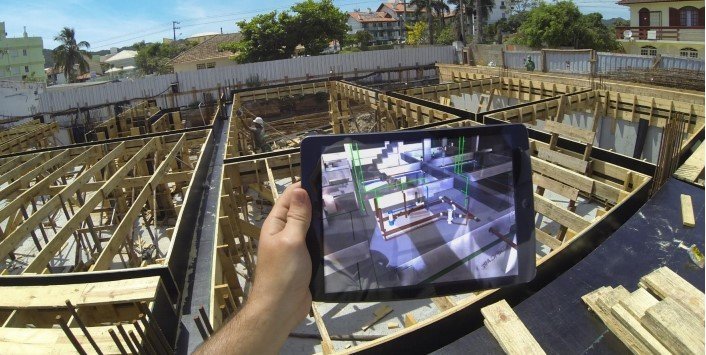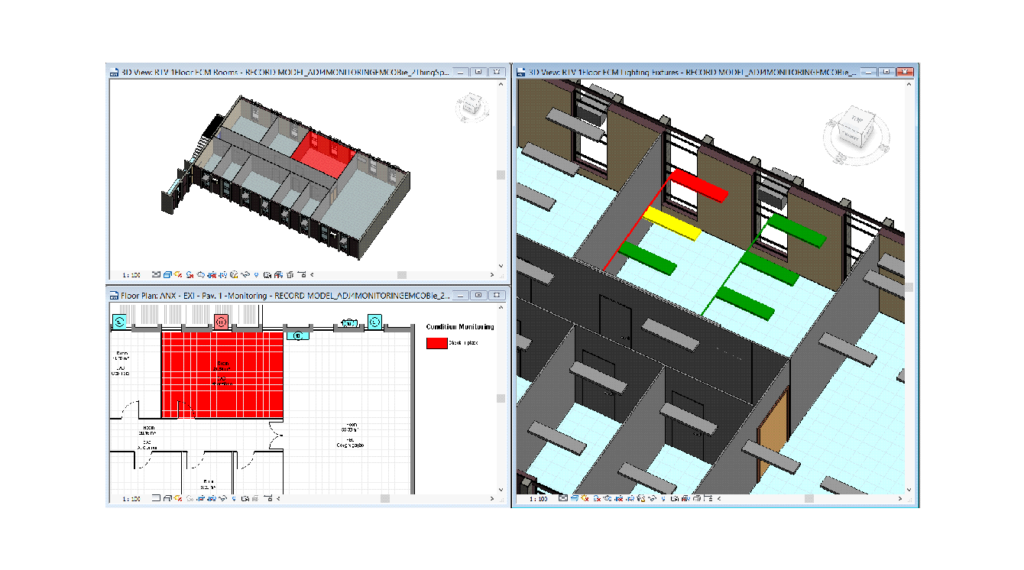The integration of BIM Management with Agile Project Management Methodology represents a significant advancement in the construction industry, bringing together efficiency, precision, and flexibility. While BIM revolutionizes how projects are executed and managed, providing a broader and more detailed view of a construction, the agile approach brings with it the ability for continuous adaptation to changes and a focus on delivering value to the client iteratively and incrementally. In this article, we will explore the benefits and challenges of this integration, highlighting how these two complementary approaches can work in synergy to drive effectiveness and innovation in construction projects.
What is Agile Project Management Methodology?
According to the Project Management Institute – PMI, Agile Project Management Methodology is an iterative and incremental approach to project development and management, focused on continuous delivery of value to the client through collaboration, adaptation to changes, and rapid response to evolving requirements.
Unlike traditional project management approaches, agile methodologies prioritize direct interaction between team members and the client, promoting flexibility and the ability to respond to changes throughout the project lifecycle. Some of the most well-known agile methodologies include Scrum, Kanban, and Extreme Programming (XP).

What are the key characteristics of Agile Project Management Methodologies and how do they relate to BIM Management?
Agile Project Management Methodologies share several key characteristics:
Iterative and Incremental: Work is divided into short, iterative cycles, called sprints, with incremental deliveries at the end of each cycle.
Similarly to agile methodologies, the BIM approach allows projects to be developed iteratively and incrementally, with continuous creation and updating of digital models that evolve throughout the project lifecycle.
Flexibility: Prioritizes the ability to respond to changes throughout the project, adapting to client needs and market conditions.
Flexibility is a fundamental characteristic of both BIM and agile methodologies. In the context of BIM, flexibility allows models to be easily adapted to reflect changes in project requirements, such as alterations in design or materials used.
Collaboration: Promotes frequent communication and intensive collaboration among all team members, as well as with stakeholders, to ensure everyone is aligned with project objectives.
BIM promotes collaboration among various project participants, from architects and engineers to contractors and owners. This collaboration is essential for project success and aligns with the collaboration focus of agile methodologies.
Continuous Value Delivery: Focuses on the continuous delivery of valuable functionalities or products to the client, prioritizing those of greater relevance and impact.
BIM methodology enables continuous value delivery throughout the project lifecycle, providing accurate and updated information that adds value during both the design phase and the construction and operation of the building.
Team Self-organization: Teams are self-organized and multifunctional, responsible for making decisions and solving problems collaboratively.
Similarly to agile methodologies, BIM facilitates constant feedback from stakeholders, allowing for quick adjustments and continuous improvements in the model and the project as a whole.
Constant Feedback: Encourages continuous feedback from the client and end-users throughout the development process, allowing for quick adjustments and continuous improvement.
Transparency: All project-related information is accessible and transparent to all team members, promoting trust and shared responsibility.
BIM promotes transparency by providing detailed information about the project to all involved parties, which is essential for effective collaboration and informed decision-making.
Value-Oriented Metrics: Utilizes metrics that reflect the value delivered to the client, such as delivery speed, customer satisfaction, and product quality.
BIM enables the use of value-oriented metrics, such as model accuracy, construction efficiency, and building performance, to assess project success and ensure value delivery to the client.

What are the Key Benefits of Integrating Agile Project Management Methodology with BIM Management?
The integration of Agile Project Management Methodology with BIM Management brings several significant benefits to engineering and construction teams. Some of the key benefits include:
Incremental Value Delivery: The combination of BIM with agile methodologies allows for faster and incremental value delivery to the client, enabling essential project functionalities to be delivered in short and frequent cycles.
Greater Flexibility: Agile approach promotes flexibility and continuous adaptation to changes in project requirements, while BIM provides the capability to make adjustments and modifications to the digital model efficiently, ensuring the project remains aligned with client needs.
Increased Efficiency and Productivity: The integration of BIM with agile methodologies can significantly improve team efficiency and productivity, eliminating redundancies, minimizing rework, and maximizing the use of available resources.
Higher Quality and Precision: BIM provides a precise and detailed digital representation of the project, while agile practices emphasize continuous testing and validation of functionalities. This results in higher quality and precision in the final product.
Quick Response to Changes: The combination of BIM with agile methodologies allows for a quick and effective response to changes in project requirements, ensuring the team can adapt rapidly to new circumstances and client demands.
My company uses Agile Project Management Methodology but wants to integrate it with BIM, what should I do?
There are several priorities to consider when making this integration. However, this varies depending on the type of service being provided by the company.
Here, I will mention three different examples related to the Construction industry: Drafting Projects of different disciplines, Construction Management, and Asset Management.
1. Company specializing in Drafting Projects of different disciplines

For a company specializing in Drafting Projects of different disciplines, when integrating Agile Project Management Methodology with BIM, the priorities to consider, in my view, are as follows:
Standardization and Consistency of BIM Models: Ensuring standardization and consistency of BIM models across all disciplines is crucial for effective integration. My first priority would be to establish clear guidelines and BIM modeling standards that are applicable to all disciplines, ensuring that models are interoperable and can be easily integrated into a collaborative environment.
Task Planning and Prioritization: Implementing an agile process for planning and prioritizing tasks for teams of different disciplines. This would involve identifying and prioritizing project functionalities and requirements, efficiently allocating resources, and defining iterations or sprints for the incremental delivery of value to the client.
Effective Collaboration and Communication: Promoting a culture of collaboration and effective communication among teams of different disciplines is essential for integration success. My third priority would be to implement tools and processes that facilitate multidisciplinary collaboration, such as Common Data Environments (CDEs), regular team meetings, and transparent sharing of project information and updates. This would ensure that all team members are aligned with project objectives and can collaborate effectively to achieve the best results.
2. Company specializing in Construction Management

For a company specializing in Construction Management, when integrating Agile Project Management Methodology with BIM, the three priorities to consider, in my view, are as follows:
Model Coordination and Agile Planning: My first priority would be to establish an effective process for coordinating BIM models, ensuring that all disciplines are aligned and conflicts are identified and resolved early on. This would include implementing regular coordination meetings and using clash detection tools. Additionally, I would integrate agile methodology into construction planning by defining iterations or sprints for specific activities and the incremental delivery of project parts.
Change Management and Continuous Adaptation: My second priority would be to develop a robust change management system that allows for a quick and effective response to changes in project requirements. This would involve adopting agile practices for task prioritization and adjustments to the plan as needed. Additionally, I would ensure that updates to BIM models are reflected agilely throughout the construction documentation.
3. Company specializing in Asset Management

Standardization and Consistency of Data: My first priority would be to ensure the standardization and consistency of data in the BIM models used for asset management. This would involve establishing guidelines and BIM modeling standards to ensure uniformity in data structure and quality. Additionally, I would implement validation and verification processes to ensure data integrity throughout the asset lifecycle.
Maximization of Asset Value: My second priority would be to focus on maximizing asset value through data analysis and insights obtained from BIM models. This would involve using metrics and performance indicators to assess asset performance, identify optimization opportunities, and make data-driven decisions to improve operational efficiency and reduce maintenance costs over time. Additionally, I would promote collaboration between asset management teams and other stakeholders to ensure that optimization strategies are aligned with overall organizational goals.
Integrating BIM and Agile Methodology: Efficiency and Flexibility
In conclusion, the integration of BIM Management with Agile Project Management Methodology represents a significant advancement in the construction industry, providing a collaborative, flexible, and value-oriented approach. By combining the precision of BIM with the adaptability of agile methodologies, teams can achieve greater efficiency, quality, and client satisfaction throughout the project lifecycle.
This synergy between technology and modern management practices enables projects to be delivered more quickly, accurately, and adaptively to the ever-evolving demands of the market. With transparent communication, effective collaboration, and a focus on incremental value delivery, organizations can tackle the challenges of the construction industry in a more agile and innovative way, driving project success and stakeholder satisfaction.




Deixe um comentário